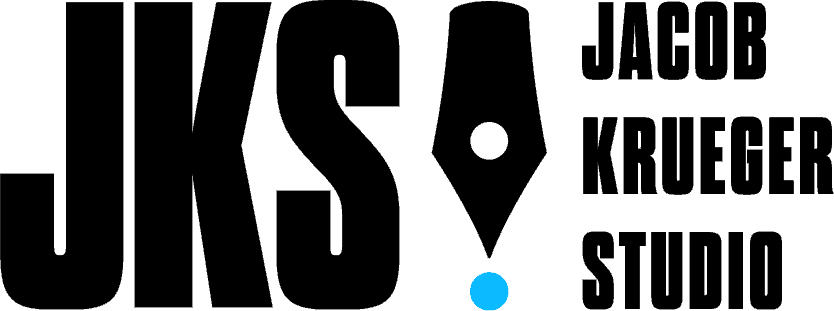[spb_text_block pb_margin_bottom=”no” pb_border_bottom=”no” width=”1/1″ el_position=”first last”]
Stay Away From Quick Fixes
By Jacob Krueger
[/spb_text_block] [divider type=”thin” text=”Go to top” full_width=”no” width=”1/1″ el_position=”first last”] [spb_text_block pb_margin_bottom=”no” pb_border_bottom=”no” width=”1/1″ el_position=”first last”]
Despite all our best-laid plans to set clear goals, focus on one thing at a time, and concentrate on what’s already working, as we embark on a revision, there’s no denying the anxiety we all feel when working on a rewrite.
There’s often such shame about the perceived failures of our writing and such pressure just to finally get to the end of this revision so that we can get on with the business of selling our screenplays, quitting our jobs, and finally having the lives about which we have always dreamed.
This shame and pressure can sometimes prove to be so overwhelming that, rather than allowing ourselves the journey of creative exploration through which we find our best writing, we end up racing to patch up the gaps and flaws in our stories using the first solutions we find, covering the holes with the writing equivalent of duct tape and chewing gum and smoothing out the rough edges with the same old formulaic clichés.
As a result, we end up cutting ourselves off from the full power of our voices, and robbing our screenplays of the very writing that can actually get us the success we dream of: the raw, visceral, original, and compelling ideas that can shake a producer by their designer lapels and demand that they pay attention!
As Jessica Hinds, who teaches our Meditative Writing Classes, often tells her students: think about how disappointing it would be to listen to a concert at Carnegie Hall with a performer whose main goal was to just finish the concerto! Imagine how hollow each moment would sound, how rushed each note, how deeply that careful observation at each moment would be missed. And how empty the concert would ultimately leave you feeling.
As writers, every single time we sit down with our characters is like a performance at Carnegie Hall. And if we’re going to give a performance worthy of the tickets, we’ve got to find a way to stay present in the moment no matter how much anxiety we feel.
That means we have to find a way to stay present at each moment of the rewrite, exploring the opportunities, rather than racing to the solutions, getting the most out of each moment on the stage rather than racing to get off of it!
John Cleese refers to this process as allowing yourself to sit in the discomfort of not knowing, noting that the writers who succeed are often not the ones with the most talent, but the ones who are willing to sit in this discomfort longer, in order to find the solutions and the opportunities that no one else could have imagined.
But to write in this way, you have to let go of your need to fix your script and embrace the idea that the very problems you fear may present the greatest opportunities.
It’s not the smooth, normal, perfectly formed elements that make a story so compelling. It’s the rough edges that catch us off guard, and take our breath away. In fact, it’s often the elements that the common wisdom tells us to fix that actually become the most compelling aspects of our stories.
Think about the movies and TV shows that inspire the most passion in their audiences and you’ll notice how much they fly in the face of convention. The writer of Guardians of the Galaxy begins a comedic action movie with a heart wrenching scene about the loss of a little boy’s mother. Breaking Bad forces us to fall in love with what should be one of the most despicable main characters ever written, surprising us at every turn with the depths of his depravity. Transparent follows the coming out story of an aging transgendered man without following any of the expected complications about his children’s intolerance.
Why do these films and TV shows get away with breaking the rules in this way? Because rather than asking “how do I fix it?” the writers asked themselves “how do I make it work?” and allowed themselves to get creative about challenging the status quo, and getting the story they really wanted to tell onto the page.
Doing this means setting aside your own anxieties and much of the common wisdom of screenwriting and taking a leap of faith in the power of your authentic creative voice. As any of you who have taken our Meditative Writing classes know, discovering the power of that voice is a creative journey in itself allowing you to stop being a slave to the shifting winds of inspiration and take control of the sails of your creative process.
[/spb_text_block]
[blank_spacer height=”30px” width=”1/1″ el_position=”first last”] [spb_text_block pb_margin_bottom=”no” pb_border_bottom=”no” width=”1/2″ el_position=”first”]
[sf_button colour=”accent” type=”sf-icon-reveal” size=”large” link=”https://www.writeyourscreenplay.com/2014/10/19/concentrate-whats-working/” target=”_self” icon=”ss-left” dropshadow=”no” extraclass=””]PREVIOUS ARTICLE[/sf_button]
[/spb_text_block] [spb_text_block pb_margin_bottom=”no” pb_border_bottom=”no” width=”1/2″ el_position=”last”]
[sf_button colour=”accent” type=”sf-icon-reveal” size=”large” link=”https://www.writeyourscreenplay.com/2014/10/30/beware-written-notes/” target=”_self” icon=”ss-right” dropshadow=”no” extraclass=””]NEXT ARTICLE[/sf_button]
[/spb_text_block]



